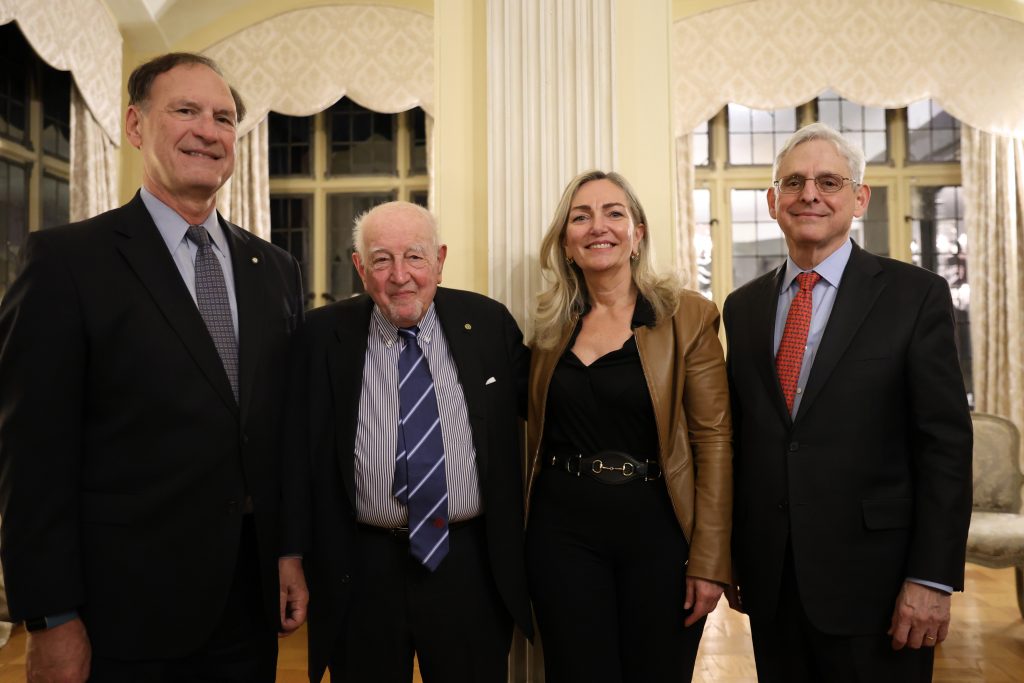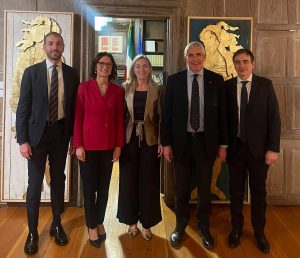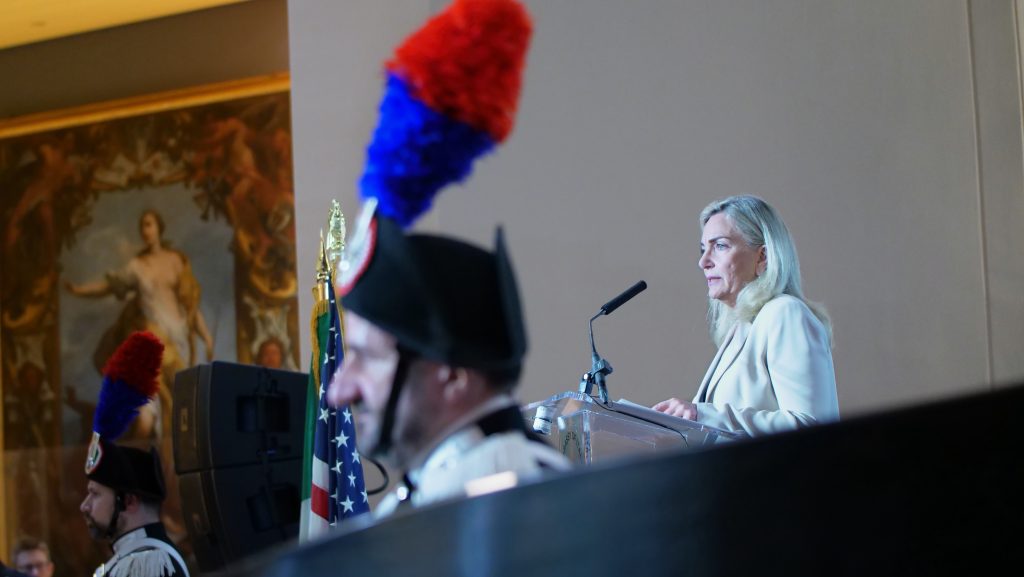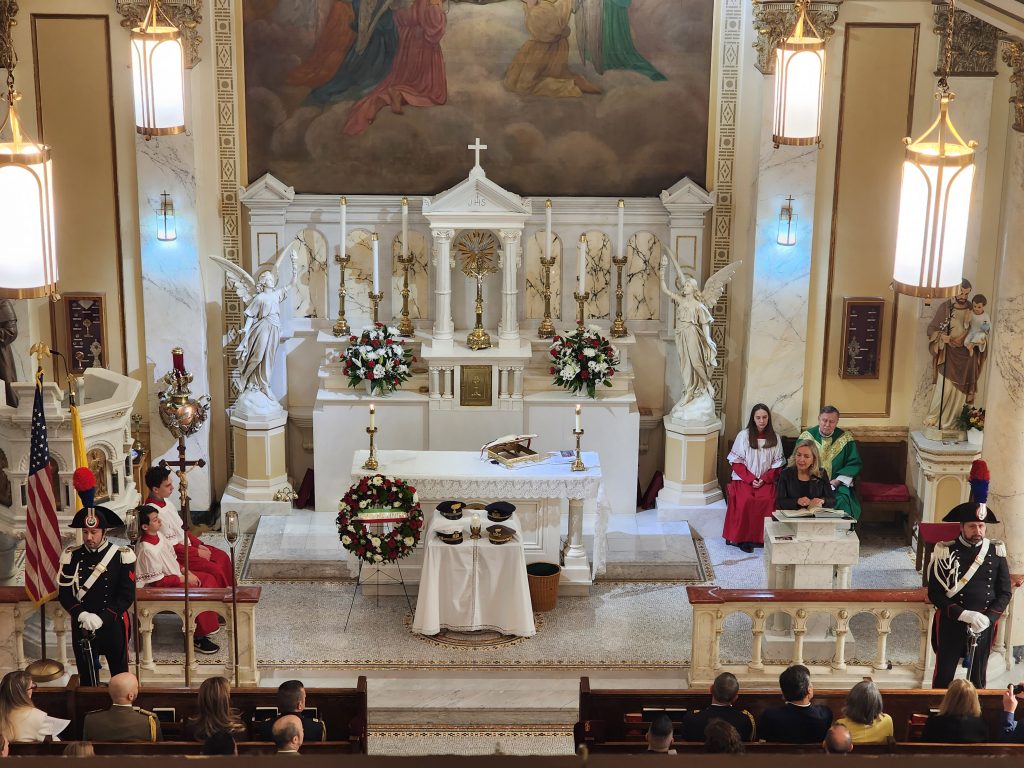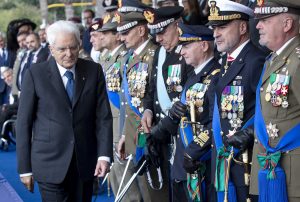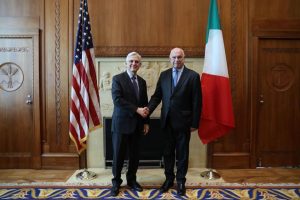Over a century ago on Sunday, December 14, 1913, Holy Rosary Church was born. It was a humble beginning. Mass was celebrated in a rented house at 83 H St. NW, Washington, D.C. The small congregation prayed on borrowed folding chairs and benches discarded by a local church. An elderly Italian woman donated a small organ and the Sisters of Perpetual Adoration furnished the priest’s vestments.
Celebrating that first Mass was Fr. Nicolas De Carlo, a young Italian priest who had just completed his studies at Catholic University, and who had taken as his personal mission the role of organizing the Italian-speaking Catholics in the Washington area.
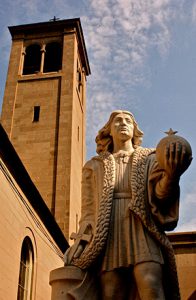
Fr. De Carlo appeared to have had a vision from the start: to create an environment that welcomed Italian immigrants, that nurtured their spirituality and that kept their Italian culture alive. He was a man with a dream but he was also a man of action, pragmatic, frugal and determined, gruff at times but with a huge personality. That combination of qualities, according to parishioners who knew him well, was the driving force behind the formation of Holy Rosary Church.
Fr. De Carlo named the church Holy Rosary reflecting his devotion to the Blessed Mother. The explanation was that just before his ordination he had fallen ill and prayed to Mary that if he recovered and was ordained, he would create a church in her name.
The H St. townhouse was soon too small to accommodate the growing congregation and the following year, Fr. De Carlo moved the church to larger quarters at Third St. and Eye St., before eventually constructing the church we know today.
He then devoted nearly half a century toward establishing Holy Rosary, the national Italian church, and shepherding his congregation through dramatic world events, such as World War I, the Great Depression, and World War II. During the latter war, he held regular novenas to pray for the safe return of the soldiers. Parishioners remember him consoling women of the parish whose sons were fighting in the war, and later holding funerals for those who did not return. At least one parish family lost two sons during WWII.
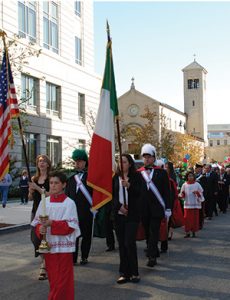
In 1960, an aging Fr. De Carlo turned over Holy Rosary to the Scalabrini Fathers, who brought with them their historic mission of service to migrants. The Scalabrinians, or Congregation of the Missionaries of St Charles Borromeo is an international community of priests founded in Piacenza, Italy, in 1887 by the Blessed Giovanni Battista Scalabrini and dedicated to the pastoral assistance of migrants.
Under the Scalabrinian pastors, Holy Rosary continued to flourish, traditions were upheld, new ones created, and community ties and ties to Italy were strengthened. The Scalabrinian pastors also added to the parish plant, held more social events on the church premises and created a formal choir. In the early 1960s, when the church faced demolition to make way for a highway, Fr. Giuseppe Spigolon, along with the help of devoted parishioners, helped save Holy Rosary from the wrecker’s ball.
Subsequent pastors have continued to grow Holy Rosary. Fr. Caesar Donanzan took on the task of creating a space, separate from the church, that would serve as a kind of piazza, where parishioners could meet after Mass, and that was large enough for sizeable events. Again, with the support of dedicated parishioners, (prominent among them was the Catucci family), Casa Italiana was born.
Over time, the Italian language school, or Scuola Italiana, was created, and today the Casa Italiana Language School has become the managing body (ente gestore) for teaching Italian in the area. Furthermore, the school also offers courses in culture, ceramics, and other activities.
Once a mimeographed pamphlet, Voce Italiana has matured into a respected newspaper with a significant and wide-ranging reach in Washington, Maryland, Virginia and beyond. The church has an impressive website presence and has moved into social media such as Facebook.
While the older groups–the Holy Name Society, the Sodality, the Altar Society, the Lido Civic Club–are still going strong, other associations have cropped up, among them the Padre Pio Prayer Group, and the Abruzzo and Molise Heritage Society.
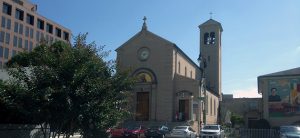
Today’s parishioners are a varied group. The roots of some go back to the early immigrants who first attended Holy Rosary in the H St. townhouse. Some are recent arrivals from Italy, who work in international or government agencies. Others aren’t necessarily of Italian heritage but may be studying the language and are attracted by the church’s strong Italian cultural element. Holy Rosary welcomes them all.
In recent years, Casa Italiana has hosted a greater variety of cultural activities: conferences on migration, screenings of Italian films, classical music concerts, art exhibitions, and even fashion shows, significantly extending the reach of the Holy Rosary community.
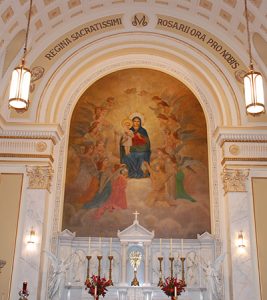
Fr. Lydio Tomasi, pastor from 2006 to June 2013, oversaw many renovations, including painting the church interior, replacing electrical wiring, refinishing floors and refurbishing the bell tower.
A new pastor, Fr. Ezio Marchetto was named in mid-2013. With his extensive pastoral experience, practical approach and nurturing demeanor, Holy Rosary is well-equipped to begin the next 100 years.– ( From Voce Italiana, December 2013, withmionor revisions)
